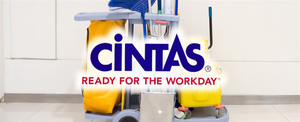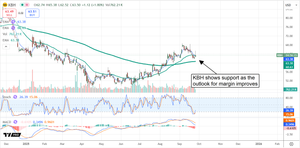
Used automotive vehicle retailer Carmax (NYSE: KMX) missed Wall Street’s revenue expectations in Q3 CY2025, with sales falling 6% year on year to $6.59 billion. Its GAAP profit of $0.64 per share was 38.1% below analysts’ consensus estimates.
Is now the time to buy CarMax? Find out by accessing our full research report, it’s free.
CarMax (KMX) Q3 CY2025 Highlights:
- Revenue: $6.59 billion vs analyst estimates of $7.07 billion (6% year-on-year decline, 6.7% miss)
- EPS (GAAP): $0.64 vs analyst expectations of $1.03 (38.1% miss)
- Adjusted EBITDA: $183.9 million vs analyst estimates of $283.1 million (2.8% margin, 35% miss)
- Operating Margin: 1.8%, down from 2.9% in the same quarter last year
- Free Cash Flow Margin: 9.9%, up from 7.3% in the same quarter last year
- Locations: 250 at quarter end, up from 245 in the same quarter last year
- Same-Store Sales fell 7.1% year on year (-0.2% in the same quarter last year)
- Market Capitalization: $8.56 billion
“While this was a challenging quarter, we remain confident in our long-term strategy and the strength of the earnings model that we have built. We are excited about the recent launch of our new brand positioning campaign `Wanna Drive?' that brings our differentiated omni-channel experience to life and underscores our ongoing commitment to empowering the customer. Also, we will continue to drive SG&A efficiency, targeting at least $150 million in incremental SG&A reductions over the next 18 months,” said Bill Nash, president and chief executive officer.
Company Overview
Known for its transparent, customer-centric approach and wide selection of vehicles, Carmax (NYSE: KMX) is the largest automotive retailer in the United States.
Revenue Growth
A company’s long-term sales performance can indicate its overall quality. Any business can put up a good quarter or two, but many enduring ones grow for years.
With $26.37 billion in revenue over the past 12 months, CarMax is one of the larger companies in the consumer retail industry and benefits from a well-known brand that influences purchasing decisions. However, its scale is a double-edged sword because it’s harder to find incremental growth when you’ve penetrated most of the market. To accelerate sales, CarMax likely needs to optimize its pricing or lean into international expansion.
As you can see below, CarMax grew its sales at a tepid 5.4% compounded annual growth rate over the last six years (we compare to 2019 to normalize for COVID-19 impacts).

This quarter, CarMax missed Wall Street’s estimates and reported a rather uninspiring 6% year-on-year revenue decline, generating $6.59 billion of revenue.
Looking ahead, sell-side analysts expect revenue to grow 5.2% over the next 12 months, similar to its six-year rate. This projection is particularly healthy for a company of its scale and suggests the market is forecasting success for its products.
Unless you’ve been living under a rock, it should be obvious by now that generative AI is going to have a huge impact on how large corporations do business. While Nvidia and AMD are trading close to all-time highs, we prefer a lesser-known (but still profitable) stock benefiting from the rise of AI. Click here to access our free report one of our favorites growth stories.
Store Performance
Number of Stores
The number of stores a retailer operates is a critical driver of how quickly company-level sales can grow.
CarMax sported 250 locations in the latest quarter. Over the last two years, it has opened new stores quickly, averaging 2.4% annual growth. This was faster than the broader consumer retail sector.
When a retailer opens new stores, it usually means it’s investing for growth because demand is greater than supply, especially in areas where consumers may not have a store within reasonable driving distance.

Same-Store Sales
A company's store base only paints one part of the picture. When demand is high, it makes sense to open more. But when demand is low, it’s prudent to close some locations and use the money in other ways. Same-store sales provides a deeper understanding of this issue because it measures organic growth at brick-and-mortar shops for at least a year.
CarMax’s demand has been shrinking over the last two years as its same-store sales have averaged 1.3% annual declines. This performance is concerning - it shows CarMax artificially boosts its revenue by building new stores. We’d like to see a company’s same-store sales rise before it takes on the costly, capital-intensive endeavor of expanding its store base.

In the latest quarter, CarMax’s same-store sales fell by 7.1% year on year. This decrease represents a further deceleration from its historical levels. We hope the business can get back on track.
Key Takeaways from CarMax’s Q3 Results
We struggled to find many positives in these results. Its revenue missed and its EBITDA fell short of Wall Street’s estimates. Overall, this was a softer quarter. The stock traded down 11.7% to $50.38 immediately following the results.
CarMax didn’t show it’s best hand this quarter, but does that create an opportunity to buy the stock right now? We think that the latest quarter is only one piece of the longer-term business quality puzzle. Quality, when combined with valuation, can help determine if the stock is a buy. We cover that in our actionable full research report which you can read here, it’s free.





